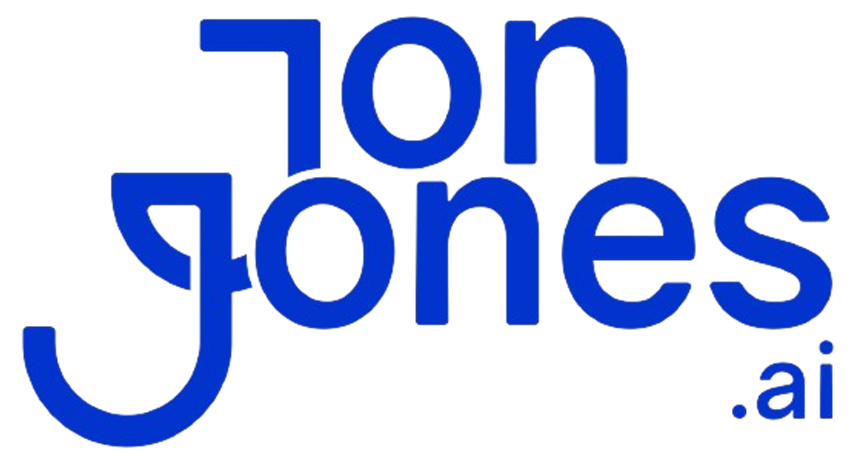Imagine getting back six hours every week. Nice. You could spend that time closing more deals or grabbing coffee with top clients. And we’re talking about a 368% return on investment (ROI, the profit you get for each dollar spent).
Here’s how it works. We use an AI lead sorter (an algorithm that ranks prospects) to sift through your list like a librarian hunting first editions. You’ll drop low-fit leads and zero in on the hottest opportunities.
You’re not alone, 80% of B2B sales leaders already use AI to spot buying signals and ditch dead-end prospects. So automated lead generation isn’t a nice-to-have. It’s table stakes.
In this post, we’ll show you how we build your prospect list, score leads predictively (forecasting who’s ready to buy), and craft personalized outreach. You’ll boost ROI and free your reps to close more deals instead of sorting spreadsheets.
Automated lead generation with AI boosts ROI

In the last 12 months, 80% of B2B sales leaders have made AI tools part of their daily toolkit for prospecting, qualifying, outreach, and analysis. We’re no longer talking about a fancy add-on, it’s a must-have. Teams using AI report up to 368% return on investment by zeroing in on high-value accounts and cutting out low-fit prospects. And when AI slashes research and follow-up time in half, reps reclaim about six hours each week to focus on strategy and closing.
Platforms like Cognism (firmographic filtering, or sorting companies by size and industry), Drift (conversational capture, which tracks chat interactions), and Improvado (unified analytics, aka combining all your data reports in one place) show how AI-driven prospecting automation, machine learning (algorithms that learn patterns) demand capture, and privacy safeguards can juice your pipeline.
When we feed rich data into predictive models (algorithms that forecast outcomes), we spot buying signals faster than manual methods ever could. That speed sets the stage for smarter outreach and deeper customer engagement. Plus, chatbots powered by these data pipelines can prequalify leads around the clock, freeing your reps from routine questions. You also get clear insights into which conversation tactics close deals most often.
Here’s how it works:
- Data Ingestion: Gathering raw contact info, website clicks, event sign-ups, and social signals into one feed for analysis.
- Prospect List Building: Scanning directories, social media, forums, and public filings, then enriching each contact with firmographic, technographic, and intent details for pinpoint targeting.
- Predictive Scoring: Combining demographic fit, actions like email opens or demo requests, and past close rates to rank leads by conversion likelihood in real time.
- Automated Outreach: Using natural language models (AI that writes human-like text) to create personalized email sequences, chat prompts, and SMS follow-ups that adapt based on lead behavior.
- CRM Handoff: Feeding scored and nurtured leads straight into HubSpot, Salesforce, or Dynamics, triggering assignment rules, list segmentation, and next-step reminders, no manual export needed.
- Performance Tracking: Building ROI measurement frameworks and dashboards that track lead volume, SQL rate (sales-qualified leads), cost per lead, and response time to guide ongoing tweaks.
Next up: Head to Section 2 for more on AI-driven prospecting, Section 3 for scoring secrets, and Section 4 for outreach personalization in your AI lead gen journey.
AI-driven Prospect List Building for Automated Lead Generation

We scan social media, web directories, public filings, and niche forums with AI (Artificial Intelligence) to spot your next prospects. Then tools like Instantly.io and Hunter.io scrape LinkedIn, conference lists, and business directories in minutes.
Here’s what you get:
- Clean lists: We verify emails and remove duplicates.
- Rich profiles: We add firmographic details (industry, company size, location) and technographic data (tech stack).
- Exact targeting: Dynamic filters help you zoom in, like finding CEOs at SaaS firms under 50 employees in New York.
This setup slashes research time by up to 80%. And you can refresh your prospect lists on demand, so you always launch campaigns with fresh data.
Predictive Scoring Algorithms in Automated Lead Generation with AI

We feed AI (artificial intelligence) models with company details like size and industry, plus the right contacts by job title and location, and behavior signals such as email opens or web visits. We track clicks, form submissions, and chat messages in real time to update lead scores on the spot. These smart data pipelines spot hot prospects much faster than doing it all by hand.
Scoring Workflow
- Data collection: We pull raw inputs from website forms, email campaigns, chat logs, and CRM notes.
- Feature crafting: We turn those inputs into clear signals like open rates or time spent on a page.
- Prediction (model inference): We let the trained AI model assign each lead a conversion chance.
- Lead routing: We send top-scoring leads straight to your sales reps or drip campaigns based on your rules.
We use reinforcement learning (a method where the system learns from feedback) to keep getting better. It compares predicted scores against actual won deals and adjusts the scoring rules. Over time, you only spend time on leads most likely to convert.
Automated Outreach Personalization with AI Email and Chatbots

So, we tap into tools like ChatGPT (an AI language model) and Jasper (an AI writing assistant) to craft cold emails that actually resonate. We match each message to a decision-maker’s role, pain point, and firmographics (company size, industry, location). It’s like having a personal letter for every lead.
And on your homepage, we roll out a chat assistant (a chatbot that talks to visitors) to qualify leads in real time. It greets newcomers, asks quick screening questions, and segments them so you know who’s hot.
Then it hands off high-intent contacts to your sales rep, complete with intent data and chat history. No more guessing where a conversation left off.
Next, your email outreach gets a boost because we align subject lines and opening lines with real-time behavior signals from the chat. You’ll know exactly what to say based on how people interact on your site.
But why stop at email and chat? We bring SMS (text messages) into the mix for automated follow-ups when prospects go quiet. Our voice dialing system runs outbound call campaigns on autopilot, and it logs every dial and response in your CRM (customer relationship management system).
Together, email, chat, SMS, and voice work as a squad, keeping leads engaged across channels and feeding data back into your personalization engine. That means smarter next steps every time.
- A/B test subject-line prompts to find the best hook
- Insert dynamic variables like names and pain points
- Optimize send times based on past engagement
- Mix channels: email, chat, SMS, and voice
- Adapt tone to fit each audience profile
Our clients see open rates jump 20–40% and conversion rates climb up to 25%. Cold contacts turn into warm conversations at scale.
Your outreach just got smarter.
CRM Integration Workflows for Automated Lead Generation

Ever get that sinking feeling when a hot lead slips away? We’ve been there. By linking your AI chatbot (automated chat helper) and email tools straight to your CRM, you’ll catch every qualified lead in HubSpot, Salesforce, or Dynamics in real time. That means your reps spend more time selling and less time copy-pasting data.
HubSpot Extension Guide
First, pick an API connector (a tool that links two systems) to map your AI data into HubSpot lists and workflows. We create custom properties like lead score (how ready a lead is) and intent data (what they’re looking for). Then we build dynamic lists that fill up when AI triggers fire. Finally, use HubSpot’s workflow builder to automatically assign follow-up tasks and send reminder emails.
Salesforce Connector Tips
We connect using OAuth (secure login tech) to keep data safe. Push AI-generated leads into a custom object called AI_Leads, mapping fields for score, source, and chat transcripts. Next, you define lead assignment rules so top-scoring leads land with the right rep. Then you turn on email alerts for instant notifications. Nice.
Dynamics Connector Tutorial
Use batch processing (group uploads) for bulk imports and webhooks (instant notifications) for single records. Map entities like Contacts and Accounts with matching data types. If a record fails, log it into a custom IntegrationErrors table and retry automatically.
After setup, test your workflows end to end, check logs every day, and set up alerts for sync failures. Keep an eye on API usage and field consistency so your CRM stays healthy and delivers accurate, real-time leads.
Measuring ROI and Performance in AI-driven Automated Lead Generation

Tracking the right numbers turns guesswork into clear action.
Nice.
When we build a return on investment (ROI) framework, you see cost per acquisition (what you pay to land a customer). Then you compare it with lifetime value uplift (the revenue each customer brings over time). That way, you can spot which tactics really move the needle.
And to keep things clear, track these key metrics:
- Lead volume: number of leads your AI (artificial intelligence) system generates each month.
- SQL rate: sales-qualified lead rate (percent of leads ready for your sales team).
- Conversion rate: how many leads become customers.
- Cost per lead: average spend to get one lead.
- Response time: how fast you reach out.
- Engagement rate: how many leads interact.
- Attribution by AI channel: the source of each lead.
Platforms like Improvado pull data from over 500 sources and run what-if scenarios (like shifting budget between channels) to forecast your results. Then we map pipeline velocity (how fast leads turn into customers) on a live dashboard. You’ll spot friction before it clogs your funnel.
| Metric | Definition | Benchmark | Review Frequency |
|---|---|---|---|
| Lead Volume | # of AI-sourced leads per month | 500–1,000 | Weekly |
| SQL Rate | % of qualified leads vs. total leads | 20–30% | Bi-weekly |
| CPL | Cost per lead | $30–$60 | Monthly |
| Response Time | Avg. time to engage a lead | <2 hours | Daily |
| Engagement Rate | Email/chat interaction % | 15–25% | Weekly |
When you pair a key performance indicator (KPI) dashboard with real-time alerts, you’ll see dips in lead volume or spikes in cost per lead right away. You might set an alert when engagement rate falls below 15% or SQL rate drifts under 20%. That live feedback loop keeps your AI engine fine-tuned and makes every dollar work harder.
Compliance and Ethical AI in Automated Lead Generation

Privacy rules like GDPR (General Data Protection Regulation) keep your contact lists neat and protect people’s info. Tools that follow GDPR, like Cognism, only grab business emails, cross-check against Do-Not-Call lists, and ping you if data changes. To play it safe, don’t upload sensitive personal details, pick paid plans that log every action, and loop in your legal or compliance team from the start.
Strong cyber defenses shield your AI (artificial intelligence) tools and customer data from breaches. You can encrypt info at rest and in transit, and use role-based access controls so only the right folks see what they need.
Running regular security audits helps you spot weak spots before they turn into issues. Nice. And logging every data change gives you a clear audit trail and flags anything out of the ordinary.
Building and training fair AI models keeps your lead engine honest. Start with diverse datasets so you don’t get skewed results.
Then add bias checks, like fairness tests, into your algorithms. Schedule bias audits now and then to stay on track. That way, your system treats each prospect equally and protects your reputation.
Final Words
In the action, we kicked off with adoption stats and a quick rundown of AI’s six core stages for streamlined lead-gen.
Next we saw how AI builds and enriches prospect lists in minutes, scores leads with predictive algorithms, and personalizes outreach across email, chat, SMS, and calls.
We then mapped AI workflows into CRMs, tracked performance with key metrics, and plugged in compliance guardrails.
You’re now set to deploy automated lead generation with AI that scales your funnel, let’s watch those leads climb.
FAQ
Can AI be used to automate lead generation?
AI can be used to automate lead generation by scraping prospect data, scoring high-value contacts, and sending tailored outreach without manual effort, letting sales teams focus on closing deals.
What is the role of AI in lead generation?
The role of AI in lead generation is to analyze data, identify promising prospects through predictive scoring (algorithm that prioritizes leads), and optimize outreach timing and messaging for higher conversion rates.
Can ChatGPT do lead generation?
ChatGPT can do lead generation by drafting personalized cold emails, crafting social media messages, and scripting chatbot interactions to qualify prospects and guide them into your sales funnel.
What free AI tools exist for automated lead generation?
Free AI tools exist for automated lead generation like HubSpot CRM’s free suite, Clearbit Connect, and Google Sheets add-ons that enrich contact lists and automate basic outreach sequences.
Which are the best AI lead generation tools?
The best AI lead generation tools include Cognism for data-driven prospect lists, Drift for conversational bots, Improvado for performance tracking, and Seamless.AI for real-time contact discovery.
What companies offer AI lead generation services?
Companies offering AI lead generation services range from startups like Seamless.AI and Cognism to enterprises like Drift and Improvado, delivering automated prospecting, scoring algorithms, and integrated CRM workflows.
How does B2C AI lead generation work?
B2C AI lead generation works by analyzing consumer behavior patterns, segmenting audiences based on interests and demographics, then automating personalized outreach via email, SMS, or chatbots to drive conversions at scale.
What do Reddit users say about automated lead generation with AI?
Reddit users discuss automated lead generation with AI by sharing experiences with tools like Hunter.io and Instantly.io, swapping tips on list building and personalization, and debating ROI and data accuracy in real campaigns.






